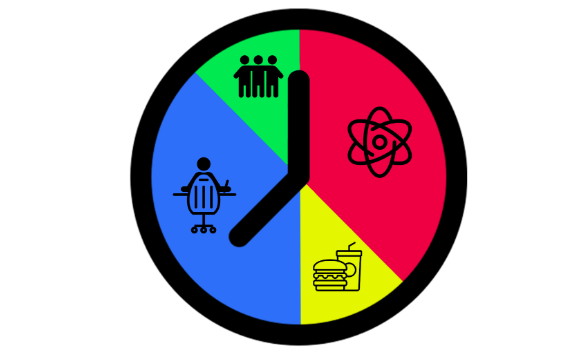Maintaining A Positive Attitude for AP Testing

A 1-hour schedule is broken up into 25-minute chunks with 5-minute breaks, following the Pomodoro technique.
Advanced Placement (AP) exams have officially begun, and the pent-up stress within students participating in this hellish event may be ready to explode. From overachieving freshmen to determined juniors, studying for AP tests has never been more hectic.
“The pressure from the magnitude of the AP tests makes me stressed,” junior Anthony Chan said. “The tests matter to me because I know that I spent the year working on the material and do not want to waste all the hard work I put in.”
Many websites talk about methods to de-stress, but most are far from practical, such as “getting more sleep,” an unobtainable feat for many high school students. However, not all hope is lost. There are several effective options, out of thousands, to help you get rid of the weight on your shoulders and motivate more productive performance to come.
Being with friends is an excellent way to take your mind off the excruciating pain of academics, with their presence proven to reduce production of cortisol, a stress hormone, according to HuffPost Life. Even if you are just looking to study, having a friend in reach can help with deeper understanding of the subject.
We could talk all day about how physical exercise and extra sleep are incredible stress reducers, but we know that your hectic study schedules will not allow such time-consuming activities. The Weil’s breathing exercise, on the other hand, takes but 19 seconds to soothe your heartbeat and reduce anxiety levels. The exercise is simple: inhale for four seconds, hold that breath in for seven and exhale for eight seconds, according to Medical Daily. This simple technique placates your mind as you study hard for upcoming tests.
There is also an effective study strategy known as the Pomodoro technique. This involves breaking up your study sessions into small half-hour chunks consisting of 25 minutes studying and five minutes relaxing.
“A break every 25 minutes lets you see things from a different perspective and enables you to come up with different solutions,” Pomodoro technique creator Francesco Cirillo wrote in his paper titled “The Pomodoro Technique.’ “You often find mistakes to correct, and your creative processes are stimulated. Detachment enhances the value of continuity.”
We wish you the best possible performance on all exams. Good luck!
Your donation will support the student journalists of Portola High School. Your contribution will allow us to purchase equipment and cover our annual website hosting costs.

William Hsieh is your 2019-2020 Front Page Editor. He has previously served as the Director of Photography last year. He likes photography and graphic...

Aaron Sha is the 2019-20 Features Editor for his third and, sadly, final year in the Portola Pilot. In this year, he hopes to bring the people and events...



